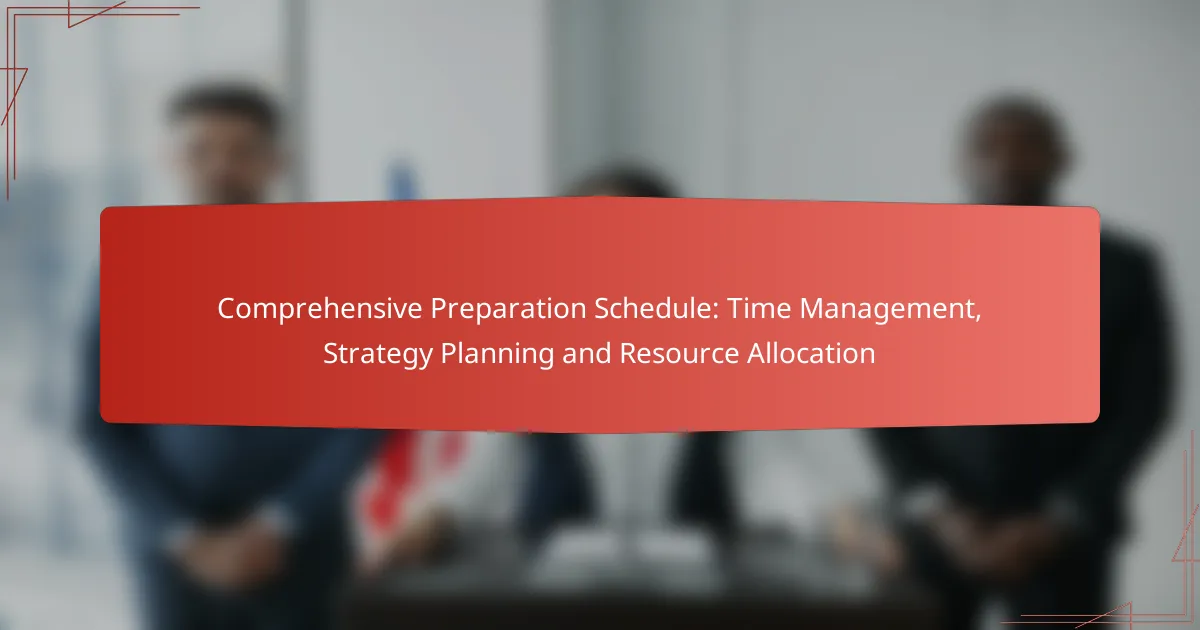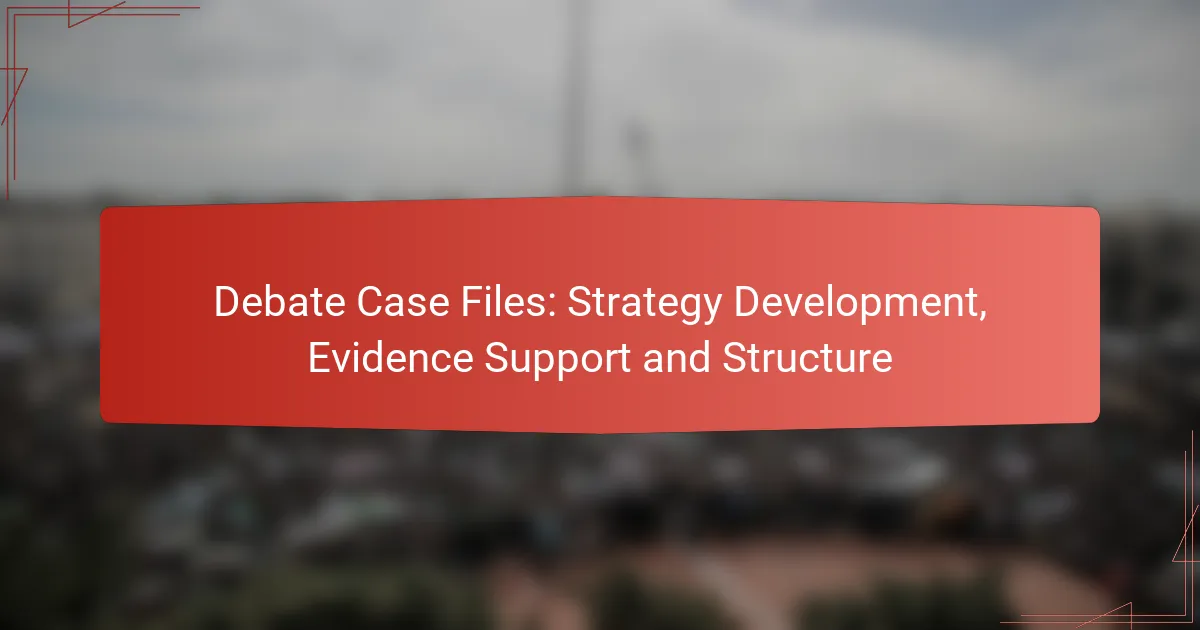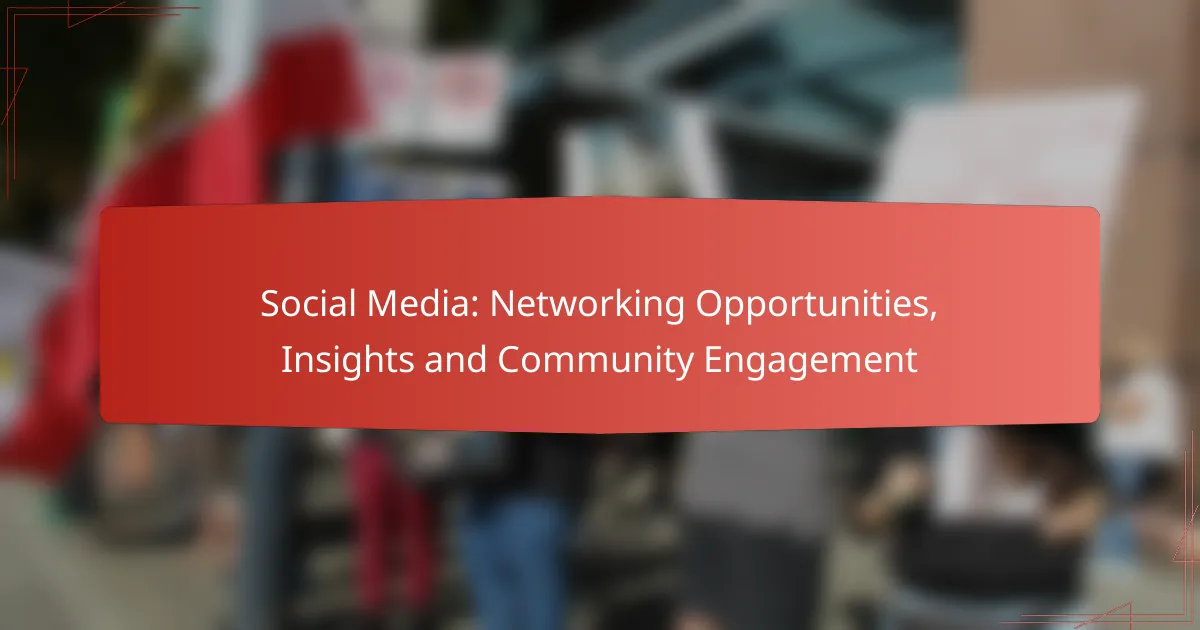A comprehensive preparation schedule is essential for achieving specific goals through effective time management, strategy planning, and resource allocation. By clearly outlining tasks, timelines, and necessary resources, individuals can enhance productivity and meet deadlines with greater efficiency. Implementing structured techniques for time management and strategically distributing resources ensures that efforts are focused and optimized for success.
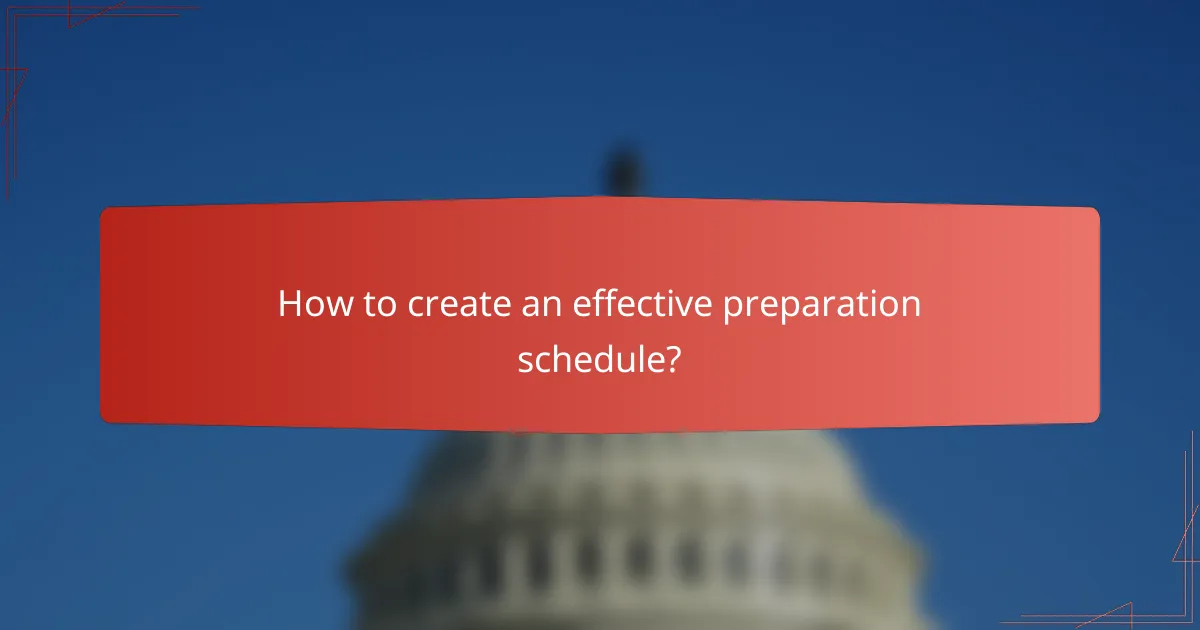
How to create an effective preparation schedule?
An effective preparation schedule is a structured plan that outlines tasks, timelines, and resources needed to achieve specific goals. By organizing your time and efforts, you can enhance productivity and ensure that you meet deadlines efficiently.
Define clear objectives
Clearly defined objectives are essential for a successful preparation schedule. Start by identifying what you want to achieve, whether it’s completing a project, studying for an exam, or preparing for a presentation.
Use the SMART criteria—Specific, Measurable, Achievable, Relevant, and Time-bound—to refine your objectives. For example, instead of saying “I want to study,” specify “I will study Chapter 3 of my textbook for two hours on Saturday.”
Break tasks into manageable steps
Breaking tasks into smaller, manageable steps makes them less overwhelming and easier to tackle. Start by listing all the tasks required to meet your objectives, then divide them into smaller actions.
For instance, if your goal is to write a report, your steps might include researching, outlining, drafting, and revising. This approach allows you to focus on one step at a time, making progress more visible and motivating.
Set realistic deadlines
Setting realistic deadlines is crucial for maintaining momentum and avoiding burnout. Assess how long each task will take and consider your availability and other commitments.
A good rule of thumb is to allocate slightly more time than you think you need, as unexpected challenges can arise. For example, if you estimate that a task will take three hours, aim to schedule it for four hours to accommodate any delays.
Utilize scheduling tools
Scheduling tools can significantly enhance your preparation schedule by providing organization and reminders. Consider using digital calendars, project management apps, or simple spreadsheets to keep track of tasks and deadlines.
Popular tools like Google Calendar or Trello allow you to visualize your schedule and set notifications for upcoming tasks. Choose a tool that fits your workflow and helps you stay on track.
Incorporate buffer times
Incorporating buffer times into your schedule is essential to accommodate unexpected delays or additional tasks. Buffer times act as a safety net, ensuring that you can adjust your plan without feeling overwhelmed.
For example, if you have a series of tasks planned for a day, consider adding 15-30 minutes between each task. This practice allows you to regroup and prepare for the next step, reducing stress and enhancing focus.
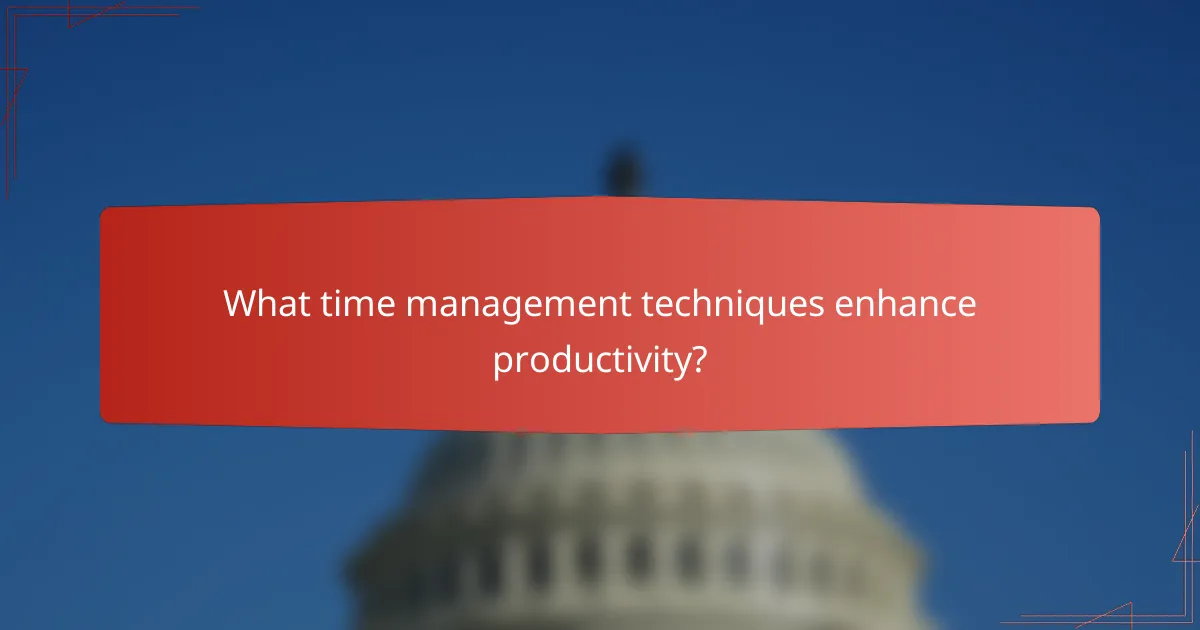
What time management techniques enhance productivity?
Effective time management techniques can significantly boost productivity by helping individuals prioritize tasks and maintain focus. Techniques like the Pomodoro Technique, time blocking, and the Eisenhower Matrix provide structured approaches to managing time efficiently.
Pomodoro Technique
The Pomodoro Technique involves breaking work into intervals, traditionally 25 minutes long, separated by short breaks. This method helps maintain concentration and reduces mental fatigue by providing regular rest periods.
To implement this technique, choose a task, set a timer for 25 minutes, and work until the timer rings. Afterward, take a 5-minute break. After completing four cycles, take a longer break of 15-30 minutes. This structured approach can enhance focus and productivity.
Time blocking
Time blocking is a scheduling method where specific blocks of time are allocated for different tasks or activities throughout the day. This technique helps individuals visualize their day and ensures dedicated time for important tasks.
To use time blocking, create a daily or weekly schedule that includes blocks for work, meetings, and personal activities. Be realistic about how much time each task will take and avoid overloading your schedule. This method can help prevent multitasking and distractions.
Eisenhower Matrix
The Eisenhower Matrix is a prioritization tool that categorizes tasks based on urgency and importance. It divides tasks into four quadrants: urgent and important, important but not urgent, urgent but not important, and neither urgent nor important.
To apply this matrix, list your tasks and place them in the appropriate quadrant. Focus on completing tasks in the first quadrant first, while scheduling or delegating tasks in the other quadrants. This method helps clarify priorities and can lead to more effective decision-making.
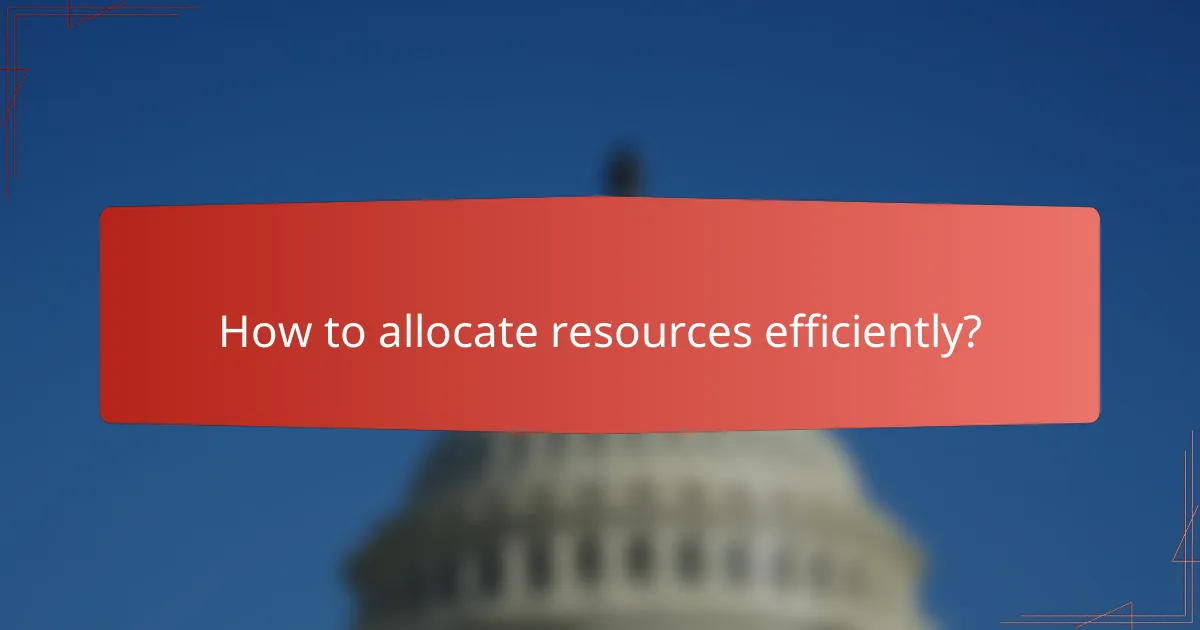
How to allocate resources efficiently?
Efficient resource allocation involves strategically distributing available assets to maximize productivity and achieve goals. This requires careful planning, assessment of resources, and ongoing monitoring to ensure optimal use.
Assess available resources
Start by identifying all resources at your disposal, including personnel, budget, equipment, and time. Create a comprehensive inventory that details each resource’s quantity, quality, and availability. This assessment helps in understanding what is realistically achievable.
Consider categorizing resources into essential and non-essential groups. Essential resources are critical for project completion, while non-essential ones can be deprioritized or reallocated if necessary. This classification aids in making informed decisions during the allocation process.
Prioritize tasks based on impact
Evaluate tasks by their potential impact on overall objectives. Use a scoring system to rank tasks based on criteria such as urgency, importance, and resource requirements. Focus on high-impact tasks that align closely with your strategic goals.
Employ the Eisenhower Matrix to categorize tasks into four quadrants: urgent and important, important but not urgent, urgent but not important, and neither. This visual tool helps in prioritizing effectively and ensuring that resources are directed towards the most critical tasks.
Monitor resource utilization
Regularly track how resources are being utilized to identify inefficiencies or bottlenecks. Implement tools like Gantt charts or project management software to visualize resource allocation and task progress. This monitoring allows for timely adjustments to keep projects on track.
Establish key performance indicators (KPIs) to measure resource effectiveness. For instance, assess the percentage of budget spent versus tasks completed to gauge efficiency. Adjust resource allocation based on these insights to enhance productivity and ensure goals are met.
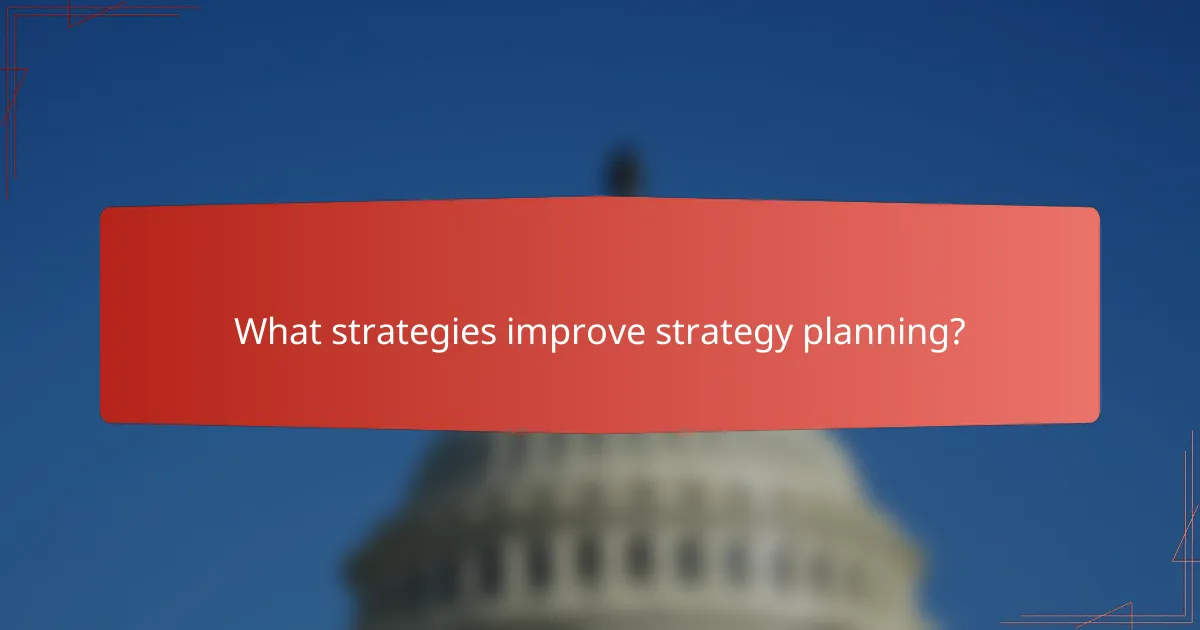
What strategies improve strategy planning?
Effective strategy planning can be enhanced through structured methodologies that provide clarity and focus. Key strategies include SWOT analysis, SMART goals, and scenario planning, each offering unique insights and frameworks for decision-making.
SWOT analysis
SWOT analysis is a strategic tool used to identify an organization’s Strengths, Weaknesses, Opportunities, and Threats. By assessing these four areas, teams can gain a comprehensive understanding of their internal capabilities and external environment.
To conduct a SWOT analysis, gather a diverse group of stakeholders to brainstorm and categorize insights into each quadrant. This collaborative approach helps uncover hidden strengths and potential threats that may not be immediately obvious.
A common pitfall is focusing too heavily on weaknesses without recognizing strengths. Balance the analysis by ensuring that each category receives equal attention to foster a well-rounded strategy.
SMART goals
SMART goals are specific, measurable, achievable, relevant, and time-bound objectives that guide strategic planning. This framework ensures that goals are clear and actionable, making it easier to track progress and adjust strategies as needed.
When setting SMART goals, start by defining what success looks like and establish metrics to measure progress. For example, instead of stating “increase sales,” a SMART goal would be “increase sales by 15% over the next quarter.” This specificity helps maintain focus and accountability.
A common mistake is setting overly ambitious goals that can lead to frustration. Aim for challenging yet attainable targets to keep the team motivated and engaged.
Scenario planning
Scenario planning involves creating detailed narratives about potential future events and their impacts on an organization. This technique helps teams prepare for uncertainties by exploring various possibilities and developing flexible strategies.
To implement scenario planning, identify key drivers of change in your industry and create several plausible scenarios based on those factors. For instance, consider how changes in regulations or market trends could affect your business operations.
Be cautious of focusing too much on a single scenario; instead, develop multiple scenarios to ensure a comprehensive view. This diversity in planning allows for better preparedness and adaptability in the face of change.
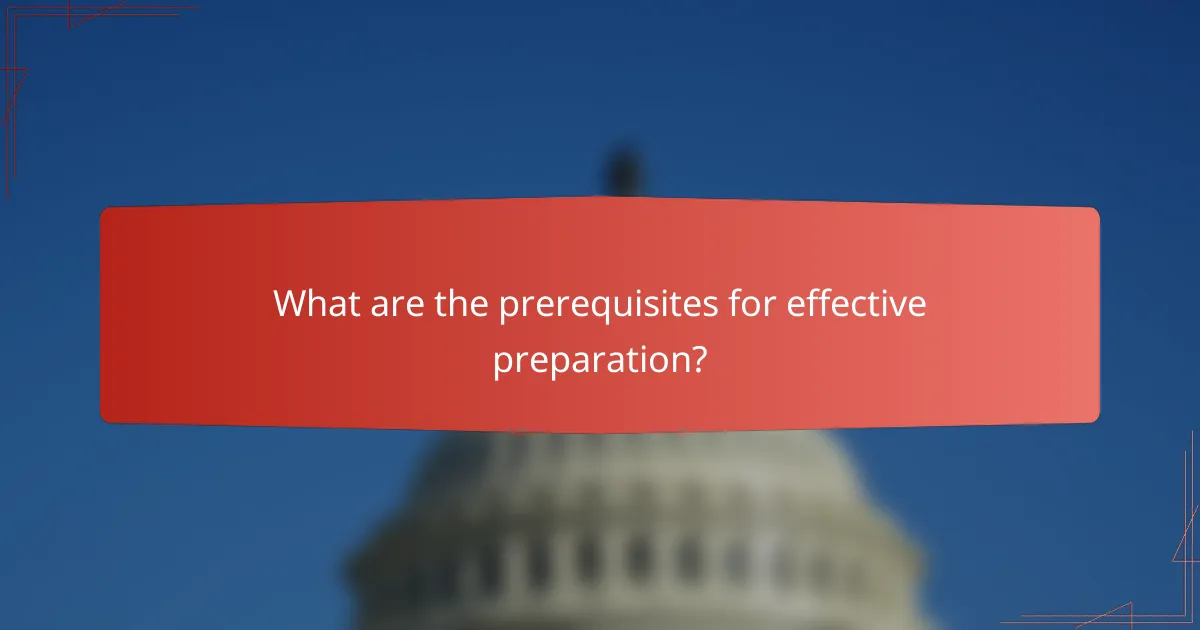
What are the prerequisites for effective preparation?
Effective preparation requires a clear understanding of objectives, stakeholder needs, and available resources. Establishing these prerequisites ensures that time management, strategy planning, and resource allocation are aligned with the overall goals.
Identify stakeholder needs
Identifying stakeholder needs is crucial for effective preparation. This involves engaging with key individuals or groups who have a vested interest in the outcomes, such as team members, clients, or management. Understanding their expectations helps tailor the preparation process to meet specific requirements.
To identify these needs, consider conducting surveys, interviews, or focus groups. Prioritize the feedback received to ensure that the most critical needs are addressed first. This approach not only enhances stakeholder satisfaction but also streamlines the preparation process.
Gather relevant data
Gathering relevant data is essential for informed decision-making during preparation. This includes collecting quantitative and qualitative information that can influence strategy and resource allocation. Sources may include market research, historical performance data, and competitor analysis.
Utilize tools such as spreadsheets or project management software to organize and analyze the data effectively. Aim for a mix of recent and historical data to identify trends and patterns. Avoid relying solely on anecdotal evidence, as this can lead to biased conclusions.
